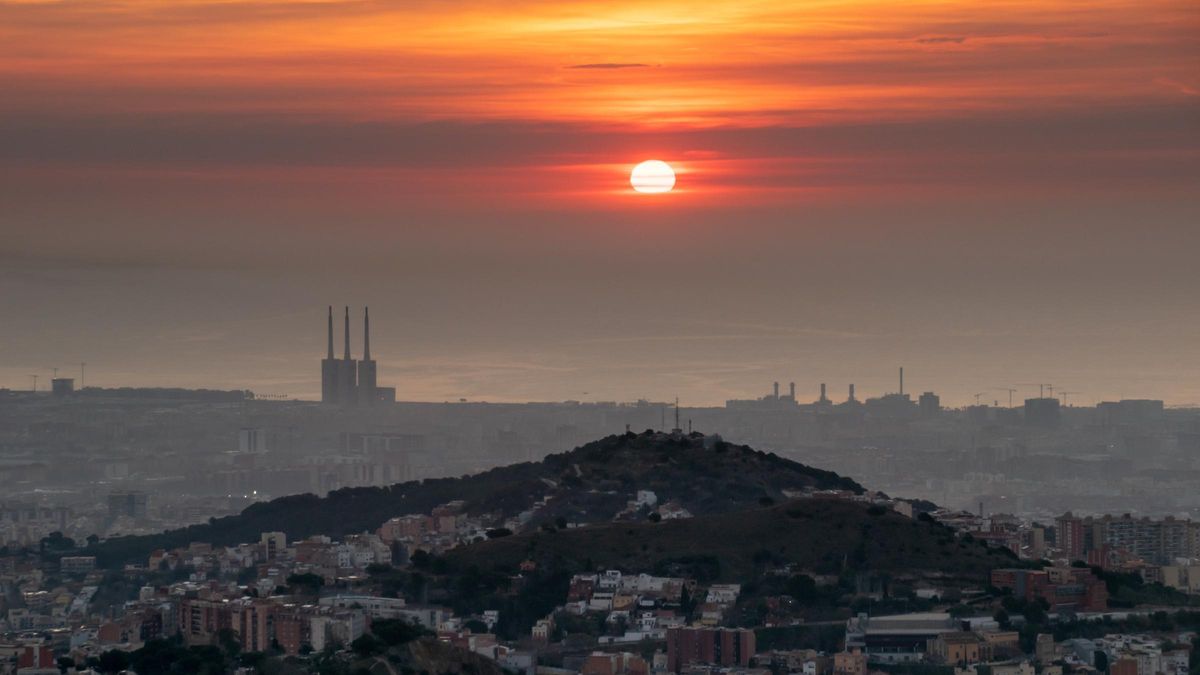Heat waves that already affect the population of the Metropolitan Area of Barcelona (AMB) could significantly intensify in the future, with temperature increases of up to 6ºC and a general reduction in relative humidity in cities by the end of the century.

A study by ICTA-UAB with high-resolution meteorological simulations forecasts an increase in extreme and dry heat periods in the Metropolitan Area of Barcelona.
This is shown in a study carried out by ICTA-UAB, which warns of an increase in average maximum temperatures of 4ºC and average minimum temperatures of 3.5ºC if greenhouse gas emissions are not drastically reduced. Temperatures could reach values above 45ºC in urban inland areas of the AMB and above 42ºC in interior areas of the city of Barcelona.
The research, recently published in the Journal of Geophysical Research – Atmospheres, focuses on heat wave episodes in the AMB over the past 30 years (1991-2020) and projects these events towards the middle and end of the century. Using the Pseudo Global Warming (PGW) method and high spatial resolution urban meteorological modeling (1 km), the study simulates how the most common meteorological conditions recorded in recent decades would evolve if repeated under the climatic conditions forecast for mid-century (2041–2070) and end-century (2071–2100). The researchers considered a scenario in which regional and global conflicts continue, and the reduction of greenhouse gases remains not a priority, thereby producing an expected rise in CO2 emissions to nearly double that of current levels by 2100.
The study allows identifying which meteorological conditions would be altered to a greater or lesser extent by global warming. The results show a notable increase in maximum temperatures and the "urban heat island" effect, particularly in cities, as well as a reduction in relative humidity and changes in sea breezes.
The main results of the study are as follows:
Temperature increase
-
Maximum temperatures could increase by an average of 4ºC and minimum temperatures around 3.5ºC by the end of the century.
-
Under especially stable atmospheric situations, increases of up to 6ºC are projected to be reached by the end of the century.
-
Thus, maximum temperatures could reach above 45ºC in urban inland areas of the AMB and above 42ºC in interior areas of the city of Barcelona. Minimum temperatures in coastal areas would not drop below 32ºC within the city of Barcelona by the end of the century.
-
The greatest temperature increases would occur in urban areas, probably due to the high absorption of radiation by artificial materials and poor ventilation caused by regional and large-scale winds. Additionally, this situation would occur in late summer conditions with a warmer Mediterranean Sea, which would also lead to higher minimum temperatures in coastal areas.
Reduction of relative humidity
-
An average decrease of 6% in relative humidity for maximum values and 5.3% for minimum values is expected, with reduction peaks of up to 16% in the Garraf area, possibly due to alterations in sea breeze behavior.
Increase in geopotential
-
Geopotential height at 500 hPa could increase up to 100 meters, which translates into a warmer atmosphere. This would occur more notably in the eastern area of the Iberian Peninsula and especially in the Mediterranean, indicating a more stable atmosphere prone to persistent heat waves.
"Our study is the first to combine the PGW approach with high-resolution urban simulations in Barcelona. This combination allows capturing the urban heat island effect and projecting more precisely how heat waves will worsen over the next 75 years," explains Sergi Ventura, ICTA-UAB researcher and lead author of the study.
The Metropolitan Area of Barcelona, which concentrates more than 3.3 million inhabitants in barely 636 km², already shows clear signs of climate vulnerability. In recent heat waves, increases in mortality of up to 27% have been observed. Although future episodes could be accompanied by lower relative humidity — which could reduce perceived thermal stress — nighttime heat will remain a critical risk factor. "Since more than half of the world's population lives in cities, it is crucial to understand how future extreme events, such as heat waves, will affect these urban areas," highlights Sergi Ventura. The study reinforces the urgency to advance adaptation plans, such as the Barcelona Climate Plan, which aims for a 40% emissions reduction by 2030 (compared to 2005), and measures like the creation of 1.6 km² of new green spaces, green roofs, and promotion of public transport.
Ventura highlights the innovative use of the Pseudo Global Warming technique to "transport" past events to future conditions. It also uses a detailed urban simulation with 1 km resolution, including urban parameters such as land use, urban materials used, and vegetation.
It also analyzes the sensitivity to global warming of the most common large-scale meteorological patterns in heat wave cases in the Metropolitan Area of Barcelona found in previous studies.






